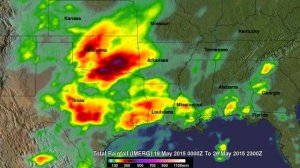A stagnant upper-air pattern that spread numerous storms and heavy rains from central Texas up into Oklahoma has resulted in record flooding for parts of the Lone Star State.
SOURCE: Latest Science News — ScienceDaily – Read entire story here.
Related posts:
- New and Noteworthy: What I Read This Week—Edition 247 Research of the Week The biggest explosion in intelligence occurred after the Gorilla line split […] ...
- Mistakes in mismatch repair genes may accurately predict response to certain immunotherapy drugs In a report of a proof-of-principle study of patients with colon and other cancers for whom standard therapies failed, researchers at the Johns Hopkins Kimmel Cancer Center say that mistakes in so-called mismatch repair genes, first identified by Johns Hopkins and other scientists two decades ago, may accurately predict who will respond to certain immunotherapy drugs known as PD-1 inhibitors. Such drugs aim to disarm systems developed by cancer cells to evade detection and destruction by immune system cells. ...
- Pembrolizumab shows real promise against head and neck cancer, study suggests Immunotherapy with the anti-PD-1 antibody pembrolizumab decreased the size of tumors by 30 percent or more in 24.8 percent of 132 patients with recurrent or metastatic head and neck cancer. That's nearly twice as effective as the current preferred treatment. ...
- Stem cell switch on the move The roots of a plant are constantly growing, so that they can provide the plant with water and minerals while also giving it a firm anchor in the ground. Responsible for these functions are pluripotent stem cells. In order to avoid differentiation and to remain pluripotent, these stem cells are dependent on signals from their neighboring cells. These signals are generated by only a small group of slowly dividing cells in the so-called quiescent centre inside the root. Biologists can now demonstrate how signals in plant roots determine the activity of stem cells. ...
- Sharp-eyed Alma spots a gigantic flare on famous red giant star Super-sharp observations with the telescope Alma have revealed what seems to be a gigantic flare on the surface of Mira, one of the closest and most famous red giant stars in the sky. Activity like this in red giants - similar to what we see in the Sun -- comes as a surprise to astronomers. The discovery could help explain how winds from giant stars make their contribution to our galaxy's ecosystem. ...





